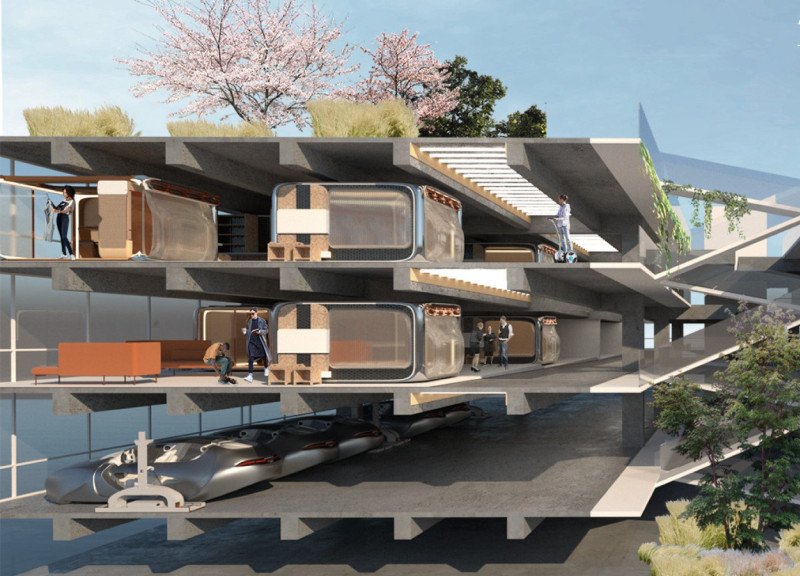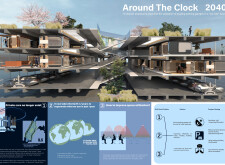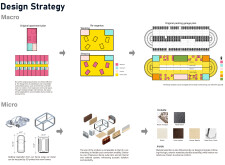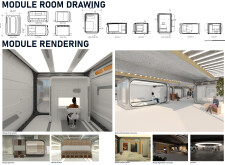5 key facts about this project
## Overview
"Around The Clock 2040" is a conceptual urban design project focused on repurposing existing structures, specifically parking garages, to accommodate evolving urban lifestyles in a future characterized by reduced reliance on private vehicles. The initiative aims to enhance space efficiency and foster community engagement within the urban framework while prioritizing sustainable design practices.
### Spatial Reconfiguration and Community Dynamics
The project approaches urban living by maximizing underutilized infrastructure. Transforming parking spaces into multifunctional living modules, the design promotes a flexible use of space that supports various activities including work, relaxation, and social interaction. These adaptable modules are organized to encourage community ties, with shared areas designed to facilitate collaboration and communal engagement, addressing the contemporary need for connection in urban settings.
### Sustainable Material Choices
The material selection reflects a commitment to sustainability, incorporating both innovative and eco-friendly elements. Key materials include:
- **Exterior Materials:** Wood terrazzo adds durability and aesthetic versatility, while metal panels provide structural resilience. Muslin contributes to sound absorption, enhancing overall interior comfort, and faux leather offers an attractive surface with sustainability benefits.
- **Interior Finishes:** Veneer betula, known for its attractive grain and eco-friendly properties, and steel mirror finishes are employed to enhance natural light and spatial perception.
- **Structural Innovation:** The project utilizes recycled car scrap metal to create modular frames, emphasizing the value of repurposing existing resources while introducing a novel architectural language that echoes automotive design.
The integration of these materials supports both the environmental goals of the project and the visual coherence of its design.





















































